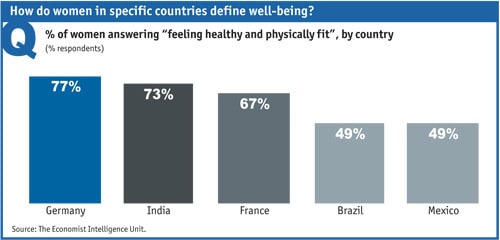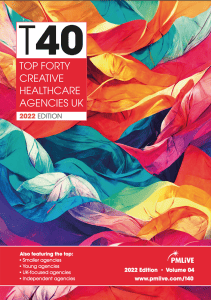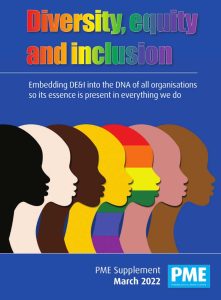
The United Nations wants to achieve full equality for women over the next 15 years. By aiming so high, it risks ignoring the smaller steps necessary to improving women’s lot, especially in poor countries.
When it comes to defining well-being, where a woman stands on the issue can depend on where she sits; specifically, where she sits geographically. A survey conducted by the Economist Intelligence Unit (EIU) on behalf of Merck Consumer Health, and presented in the recently released study Women’s health and well-being: evolving definitions and practices, finds that definitions of well-being can vary a great deal based on geography and level of economic development.

In particular, while most women (64%) in the survey equate “feeling well” with “feeling healthy and physically fit”, a difference of opinion emerges based on where the women live. A decisive majority of women in Germany – 77%–link well-being to physical health and fitness, while smaller proportions of women in Brazil (49%) and in Mexico (49%) give the same answer.
Beyond geography, a woman’s definition of well-being is influenced by many other factors, including income and immediate circumstances. While professional women in rich countries worry about juggling their careers and family life, women in poorer countries tend to focus on immediate necessities, sometimes as basic as adequate food supplies, access to education and a measure of independence in daily life.

Against this backdrop, the United Nations is taking aim at the problems interfering with women’s well-being. For example, it targeted high maternal and infant mortality rates in its Millennium Development Goals (MDGs—see Box 1) for the years 2000-15. This year, in its recently released Sustainable Development Goals (SDGs—see Box 2) for 2016-30, the UN aimed even higher, setting ambitious goals for achieving worldwide gender equality and empowerment—that is, self-determination in decision-making—for women and girls.
There are good reasons for a focus on the broader idea of empowerment alongside the attention given to meeting basic requirements of food, shelter and health. Catrin Schulte-Hillen, who leads Médecins Sans Frontières’ working group on reproductive health and sexual violence, says “the women we talk to [in developing countries] emphasise that access to better healthcare is not necessarily a main measure of well-being. They emphasise a lack of empowerment, and immediate crises over money and lack of food.”
Measurable progress
This may explain the shift in emphasis between the earlier MDGs and the current SDGs. In general terms, the Millennium goals, and in particular MDGs #3, #4 and #5, set a series of concrete pledges in education access and child and maternal health. These pledges were ambitious and the targets were generally missed, although they did help to force some progress.
Under the new SDGs, in contrast, governments must actually achieve (rather than just promote) gender equality and empowerment for women and girls by 2030. In the space of 15 years, all violence against women must end, harmful practices must be eliminated, the value of unpaid care must be recognised, and women must be given equal access to economic resources and full participation in decision-making.
Purna Sen, head of policy at UN Women, the United Nations organisation dedicated to gender equality, says that the ambitious goals in the SDGs correctly match the magnitude of the challenges facing women in developing countries, “although these are issues in all countries”.
Setting such lofty global goals “creates the momentum for change,” she says. “It is an important shift for governments to accept that they must achieve these things and that discrimination against women must stop.” For example, Dr Sen points to concrete progress made so far in repealing laws that discriminates against women, and she is confident the task will be completed over the next few years.
Beyond that, Dr Sen argues that aiming high is necessary in order to create a general environment that fosters progress for women in developing countries. She summarises the challenges facing women globally, and notably in developing countries, as “having inadequate control over their lives; a lack of visibility, and limited perception of their complicated roles.” In its hugely ambitious SDG drive, the UN now wants to create momentum towards changing these conditions.
Setting specific targets such as those in the MDGs helps to force progress in the specified areas, while the broad sweep of SDG goals aims to build a more general momentum for change. The SDG goals of ending violence against women and ending all forms of discrimination by 2030 are certainly laudable. But in setting such high goals, the UN risks giving too little attention to the small steps and concrete targets necessary to achieve the broader ambition.
The Millennium Development Goals 2000-15: The 2015 report card
1. Eradicate extreme poverty and hunger
- Halve the proportion of people living on less than US$1 per day – MET
- Halve the proportion of people suffering from hunger – [narrowly] MISSED
2. Achieve universal primary education – [narrowly] MISSED, with net enrolment increasing from 83% in 2000 to 91% in 2015.
3. Promote gender equality and empower women
- Eliminate gender disparity in education – MISSED
4. Reduce child mortality for under-fives by two thirds – MISSED; mortality rates fell by half in 1990-2015
5. Cut maternal mortality by three quarters – MISSED with a 50% fall in 1990-2015
6. Halt and start to reverse the spread and incidence of HIV/AIDS, malaria and other diseases – MISSED, although the number of new HIV/AIDS infections fell by 40% in 2000-13
7. Ensure environmental sustainability
- Halve the proportion of people without access to safe drinking water – MET
8. Develop a global partnership for development – some success, with development aid from rich to developing countries increasing by two thirds in real terms in 2000-14
The Sustainable Development Goals: Setting a standard for 2030
1. End poverty in all its forms everywhere (Note: more than 800m people globally still live on less than US$1.25 a day)
2. End hunger, achieve food security and better nutrition and promote sustainable agriculture
3. Ensure healthy lives and promote well-being for all
4. Ensure inclusive and equitable quality education and promote lifelong learning opportunities for all
5. Achieve gender equality and empower all women and girls
- End all forms of discrimination against all women and girls everywhere
- Eliminate all forms of violence against all women and girls in the public and private spheres, including trafficking and sexual and other types of exploitation
- Eliminate all harmful practices, such as child, early and forced marriage and female genital mutilation
- Recognise and value unpaid care and domestic work through the provision of public services, infrastructure and social protection policies and the promotion of shared responsibility within the household and the family as nationally appropriate
- Ensure women’s full and effective participation and equal opportunities for leadership at all levels of decision making in political, economic and public life
- Ensure universal access to sexual and reproductive health and reproductive rights as agreed in accordance with the Programme of Action of the International Conference on Population and Development and the Beijing Platform for Action and the outcome documents of their review conferences
- Undertake reforms to give women equal rights to economic resources, as well as access to ownership and control over land and other forms of property, financial services, inheritance and natural resources, in accordance with national laws
- Enhance the use of enabling technology, in particular information and communications technology, to promote the empowerment of women
- Adopt and strengthen sound policies and enforceable legislation for the promotion of gender equality and the empowerment of all women and girls at all levels
6. Ensure access to water and sanitation for all
7. Ensure access to affordable, reliable, sustainable and modern energy for all
8. Promote inclusive and sustainable economic growth, employment and decent work for all
9. Build resilient infrastructure, promote sustainable industrialisation and foster innovation
10. Reduce inequality within and among countries
11. Make cities inclusive, safe, resilient and sustainable
12. Ensure sustainable consumption and production patterns
13. Take urgent action to combat climate change and its impacts
14. Conserve and sustainably use the oceans, seas and marine resources
15. Sustainably manage forests, combat desertification, halt and reverse land degradation, halt biodiversity loss
16. Promote just, peaceful and inclusive societies
17. Revitalise the global partnership for sustainable development




